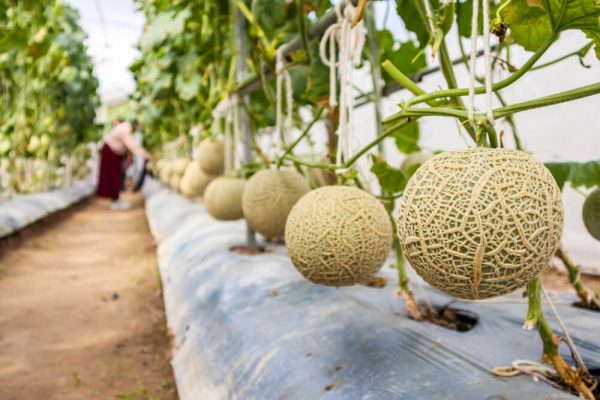How to Plant a Wall of Fruit
How to Plant a Wall of Fruit
Don’t have the space for trees? You can make the most of vertical spaces by creating a fruiting wall. All you have to do is follow these simple tips.

Cover Your Fence with a Fruiting Climber Tree
A sunny fence line can be transformed into a fruiting wall with a quick growing vine. Passionfruit vines planted in early summer will begin to fruit around 18 months. Promote side branching through pinching out the growing tip and train the new laterals along a wire support or trellis. Passionfruit vines will fruit for as long as 5-6 years. Pruning off some of the old, tired wood every year promotes healthy new fruit growth.

Plant a Fruiting Hedge
Citrus fruits are perfect hedges with lovely foliage year-round, and the smell of oranges blossoming in summer is serene. For a smaller citrus hedge try limequats or mandarins. Blueberries produce a beautiful informal hedge up to 2m tall. There a great variety of plants to suit certain climates. Feijoas are perfect for screen and windbreak. For optimal fruiting, plant a named variety, but not seedlings. Guava and olive trees are also beautiful hedges.

Espalier-Style Fruit Trees
The tried and tested craft of training fruit trees flat against a wall or fence is a highly attractive, and high yielding, option. Many varieties of fruit trees are suitable, including plums, apples, quince, pears, olives and citrus. It is important to ensure your support structure is strong. The weight increases dramatically when the plants begin to fruit.

Ballerina Apple Trees
This slender fruit tree is perfect for people who have limited garden space but don’t want to prune. They be planted along a row, ‘espalier style’ across a wall, as an attractive vertical accent in the veggie garden or as a divider between plants.
The Basics of Fruit Growing
- It is imperative to thoroughly prepare the soil. At planting time dig in plenty of slow release fertisilier and compost.
- If the soil drains poorly, plant in containers or raised beds.
- Select species that suit your climate.
- Maintain consistent watering for young plants.
- Understand which growth your tree produces fruit on and, as a result, when you should prune these plants.
Growing a Meyer Lemon Tree Espalier Style
- Select a sunny, well-aired location containing well-drained soil. Mix slow release fertiliser and compost into the soil prior to planting. A planter box or large pot is a good alternative if the soil is poorly drained.
- Attach a solid peace of wooden trellis (at least 1x1m) to a reliable support, such as a fence post.
- Choose a healthy young tree containing wide arching branches.
- Before planting, view your tree from all angles. You want to plant it so that the majority of horizontal branches align with the wall and its flattest side is lined against the trellis.
- Lightly spread the branches against the trellis and tie loosely with plastic ties or twine.
- Continue spreading and tying as they grow. Check for loosening ties.
- Remove fruit in its first year to promote vigorous growth.
- Regularly water the plant, especially in summer. Feed plant with citrus fertiliser in autumn and spring. Citrus also thrives on the liquid produced by a worm farm.
- Keep secateurs at the ready. Trim often and little to maintain the flat horizontal shape. Always maintain new fruiting wood.

